Food processing and packaging equipment accumulates grease, carbonized residue, seasonings, proteins, harmful microorganisms, biofilms, adhesives, labels, and many other contaminants that traditionally take significant time to clean.
Dry ice blasting provides a dry in-situ cleaning solution that is non-destructive, sustainable, does not use water or chemicals, and does not produce secondary waste. The process enables facilities to eliminate or reduce costly shutdown time for cleaning. Hard to reach corners and crevices are also easily cleaned with dry ice blasting, which results in an improved overall clean in your plant.
Not only does dry ice blasting remove contaminants, but it will also result in log reductions in bacteria counts and will remove biofilms without water or chemicals – all while significantly reducing cleaning time, labor, and overall costs.
Below are just some of the examples of what food and packaging facilities are cleaning.
Food Contact Surfaces
A large food company that specializes in producing cheese is cleaning cheese remnants, plastic, and fruit off of plastic and metal food contact surfaces. Dry ice blasting reduced cleaning time and resulting downtime while leaving the surfaces free of bacteria and other microorganisms.
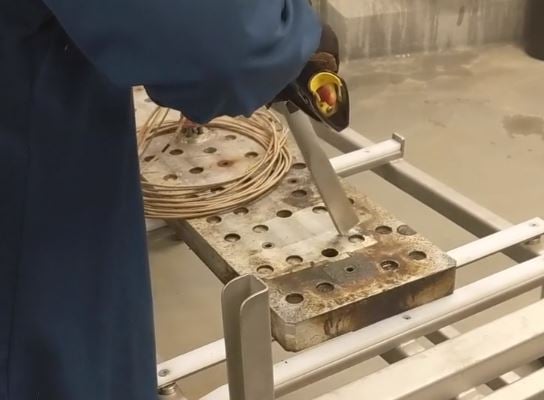
Processing Equipment
A baking company uses dry ice blasting to clean dough, flour, and baked-on greases and oils from the various metal and plastic surfaces of their equipment. Their previous cleaning method involved cleaning by hand with water and chemical cleaning solutions. They also sent out some equipment to be cleaned by a third party. The dry ice blasting process allowed them to clean considerably faster and more efficient. It also enabled the facility to clean all equipment in-house and eliminate water from their cleaning process.
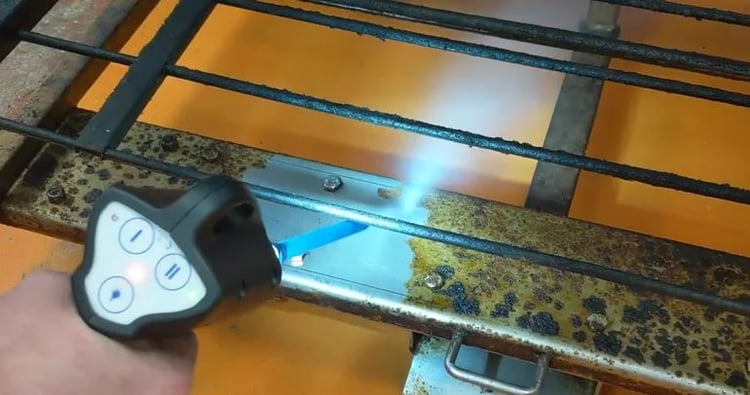
Filling and Packaging Equipment
A food facility uses dry ice blasting to clean spices and seasonings from their filling and packaging equipment. Dry ice blasting enabled the facility to significantly reduce cleaning time and increase productivity. The facility was also able to clean areas that their previous method could not clean. The company performed swab tests on the areas cleaned and confirmed that no allergens were left on the surfaces.

Conveyors
A dry grocery manufacturer uses dry ice blasting to clean food residue and other contaminants from their food contact surface conveyor belts and other processing equipment. Their previous cleaning method utilized water and they had to find a new solution to eliminate it. Dry ice blasting is a dry clean and does not use water or chemicals. The process allowed the facility to clean their conveyors in much less time.

Ovens and Mixers
A company that specializes in producing tortillas uses dry ice blasting to clean built-up carbon, grease, dough, and other contaminants from their mixers, ovens, and other processing equipment. Their previous cleaning method utilized water and was very labor intensive and timely, especially when it came to cleaning their ovens. Dry ice blasting enabled them to clean significantly faster and allowed them to eliminate water from the cleaning process. The process is also more environmentally friendly and much easier on their workers.
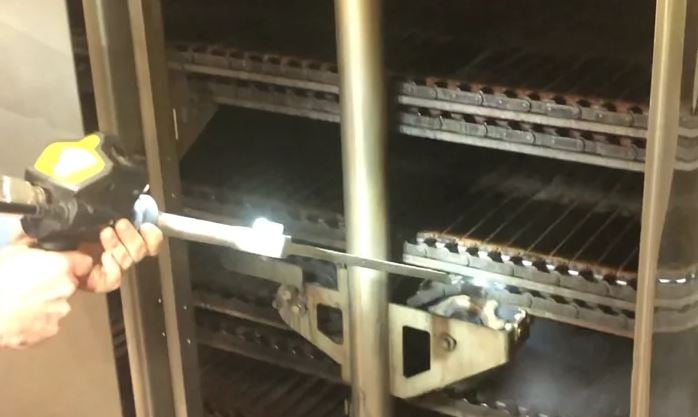
Filters
A manufacturer of chips and other snacks uses dry ice blasting to clean food, oil, and seasonings from filters, pneumatic airlines, and sensors. Dry ice blasting is non-abrasive and allows the facility to safely clean sensitive components without the risk of damaging them. All of their equipment was cleaned considerably faster with dry ice blasting – especially their filters. They have hundreds of filters that must be regularly cleaned. Dry ice blasting cut their filter cleaning time significantly.

Elevators
A facility used dry ice blasting to clean food remnants from elevators, shakers, and the plant floor. After implementing dry ice blasting, the facility cut the amount of labor and time needed to clean. When cleaning their elevators, they cut labor from four workers to two and cut time needed to clean from a day and a half to four to six hours.
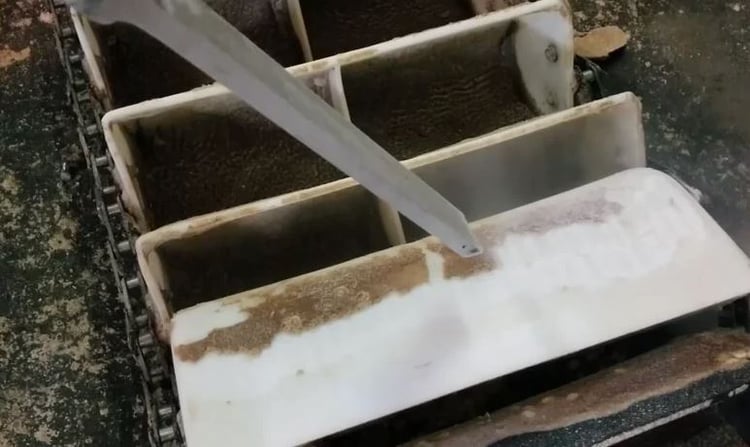
Motors and Gears
A global food company used dry ice blasting to clean glue, sweetener, and cardboard dust from pneumatic motors, gears, metal, and wiring. The facility began using dry ice blasting because they needed a new process that met TPM standards. Dry ice blasting enabled them to meet the standards and also to clean more quickly and effectively.

General Facility Cleaning
A food facility that specializes in dinner roll production utilizes dry ice blasting to perform a general facility cleaning. They previously cleaned with soap and water, but were looking for a new cleaning process that could clean around sensitive surfaces, electric wiring, sensors, and pneumatic lines. Dry ice blasting is non-abrasive and allows them to clean around these areas without the risk of damage. The cleaning process also enables them to clean hard-to-reach areas that they previously could not clean.

Nut Processing Equipment
A nut processing facility cleans almond dust, oil, and other contaminants from the metal surfaces of their processing equipment. Using dry ice blasting enables the facility to clean while their equipment is still running. This allows them to clean much faster and keep their production rates high. Also, completely cleaning the contaminants and other allergens from their equipment enabled them to ensure there was no cross-contamination.
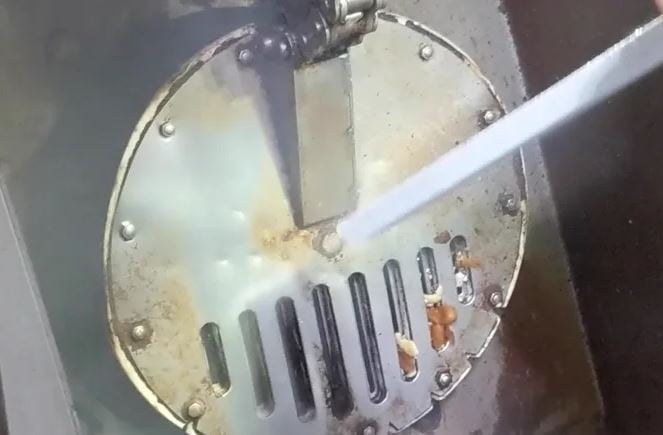
.png) English
English